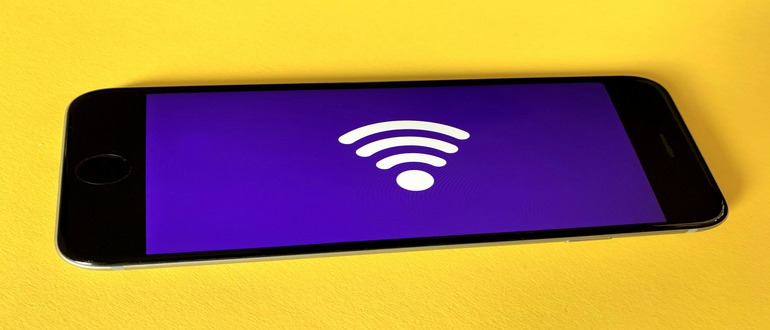
I am the president of the HOA where I live. I have been championing a project to bring dedicated fiber to every home in our development. This would require a 10-year commitment to the fiber provider, but every home would have a minimum of 500 Mbps up and 500 down, 140 channels of TV for about $80 a month (billed to the HOA per unit), with options for individual homes to go up to 10 Gbps, add more TV, home phone, video monitoring, alarm and more.
I personally thought it was a no-brainer compared to what is available to our development now — which is basically the local cable provider offering what they claim is 1.2 Gbps down and about 35 Mbps up, and similar TV coverage. Or the local cell carriers offering a slice of 5G, which most of the providers don’t give actual speed SLAs for — they just say “fast.” Worst of all the phone carrier has 30 Mbps copper wire.
Well, I wound up with a small revolt from one section of our development. They told me I don’t know anything about technology and that cable TV is dead. They all stream now, and how do I know what tech will be available in 10 years anyway? I tried to explain what we would need in 10 years time, but soon realized it was useless — they knew everything they needed to know. To them, internet access was all about watching TV. Most didn’t know the difference between 1080 or 4k, Dolby ATMOS or HDR. Let alone AI, nanotechnology and other technologies coming down the pike that will change our home lives if we have the bandwidth to support it.
Luckily, the section of our development where I live voted overwhelmingly for the fiber, and we will be moving forward. Will that leave the other section below the “last mile poverty line”?
Anyway, all of this got me thinking about the last mile — now and in the future.
What is the Last Mile, and Why It Matters More Than Ever
Most of you know what I mean by the “last mile.” But just in case, the last mile refers to the final stretch of connectivity between a service provider and the end user — your house, my house, that coffee shop down the block. It’s often the weakest link in the broadband chain, and as we step into an age of AI agents, ambient computing, 8K content and connected everything, the quality of the last mile may determine who gets to fully participate in the digital future — and who gets left behind.
Today, we’re choosing between four main options: Fiber, cable, 5G and satellite. Each has its strengths and weaknesses, but not all are built to handle the always-on, high-throughput, low-latency world we’re rapidly entering.
Fiber: The Gold Standard (If You Can Get It)
Fiber — especially symmetrical fiber-to-the-home (FTTH) — offers blazing speeds, low latency and crucially, equal upload and download speeds. In a world where AI assistants may continuously sync with cloud services, symmetrical bandwidth becomes essential. It’s also the most future-proof infrastructure available.
The catch? Deployment costs are high, timelines are long, and in many areas, local politics or legacy providers stand in the way. Trust me — I’ve lived it.
Cable: Good Enough… Until It Isn’t
Cable, often powered by DOCSIS 3.1 or 4.0, is widely available and leverages existing coaxial lines. Download speeds can be respectable, but upload speeds are still laughable in comparison — often topping out at 35 Mbps or less. Add in shared neighborhood bandwidth and rising contention ratios, and it becomes clear that cable isn’t ready for an AI-native, cloud-synced household.
Streaming might be fine today, but what about when every device in your home is talking back to the cloud in real time?
5G: Mobility With Caveats
Fixed wireless 5G is being marketed as a viable home broadband option. In urban and suburban areas with dense infrastructure, it can deliver decent performance. But reliability, consistency and actual delivered speeds still vary wildly.
More importantly, 5G has a significant latency challenge — and most providers won’t give you a service-level agreement (SLA) on performance. For households where every millisecond counts — think remote surgery, autonomous systems, or even ultra-low-latency gaming — that’s a problem.
Satellite: Global Reach, Limited Utility
LEO satellite providers like Starlink have made huge strides, especially in bringing connectivity to rural and remote areas. But they still face latency limitations, weather vulnerabilities and congestion during peak hours.
Satellites are great as a backup or for areas with zero wired infrastructure, but they’re not the foundation for a high-performance, two-way digital ecosystem.
The Future Demands More: AI, 8K and Nanonetworks
Here’s what’s coming down the pipe—sooner than most realize:
- AI agents will live alongside us, continuously exchanging data with cloud-based models or edge nodes.
- 8K and beyond streaming, immersive VR/AR, and volumetric media will become the norm.
- Ambient computing and nanotechnology — like health-monitoring wearables or environmental sensors — will need persistent, low-latency, bidirectional comms.
These workloads aren’t just about fast downloads. They’re about real-time interaction between edge devices and cloud services, often 24/7. That means symmetrical gigabit+ service, ultra-low latency and reliability — not just speed spikes.
So, What Works — and What Doesn’t
If you map these emerging use cases against the current state of last-mile tech, here’s the bottom line:
- Fiber is the only tech ready today for the future we’re building. It checks all the boxes — speed, latency, symmetry, scalability.
- Cable is aging out, and while DOCSIS 4.0 helps, it’s a retrofit, not a reinvention.
- 5G is promising, but it’s still too variable and lacks the consistency needed for mission-critical connectivity.
- Satellite is a crucial backup layer, especially for remote regions — but not a core solution in high-density or high-demand zones.
Time to Think Strategically
Building a last-mile infrastructure fit for the AI era will require:
- Fiber as the backbone, supported by wireless for redundancy and reach
- Smarter routing and orchestration, perhaps through multi-access edge computing (MEC)
- Public–private partnerships and regulatory muscle to close the digital divide and eliminate broadband deserts
In short: If we don’t invest in the last mile now, we risk building a future that only a fraction of the population can access — leaving the rest buffering in the background.
Final Thoughts
The revolt I experienced in my neighborhood was a small but telling symptom of a bigger issue: Too many people assume today’s infrastructure will be good enough for tomorrow. But “good enough” won’t cut it in an AI-native world.
If we want to empower AI agents, immersive media, ambient health monitoring and whatever else the future throws at us, we need to treat the last mile like the first priority.

